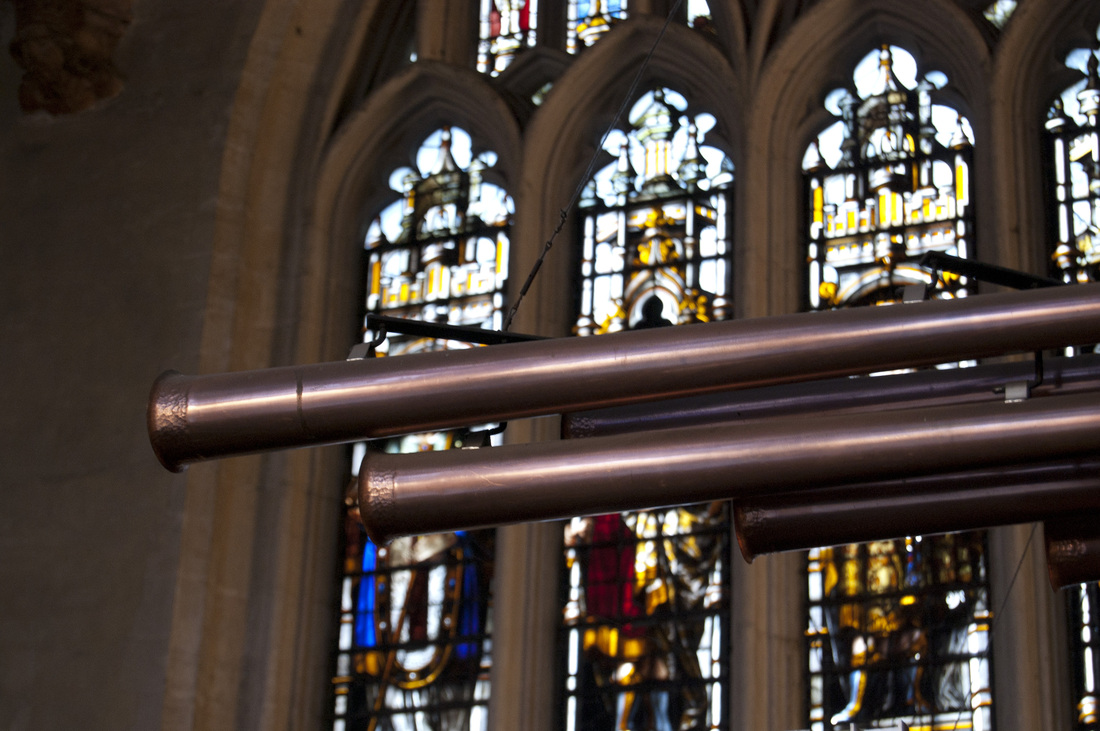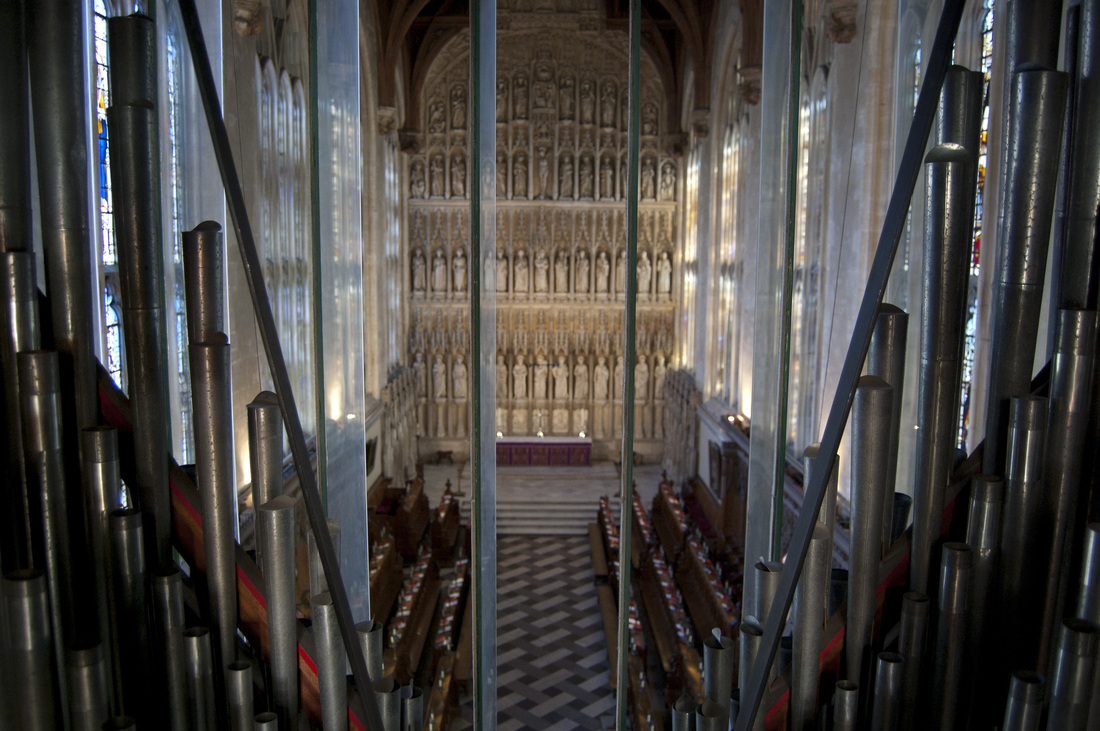Organ
The Grant, Degens and Bradbeer organ of New College Chapel was installed in 1969 and proved to be a radical departure from prevailing organ building trends both aurally and visually. Inspired by the brave new instruments being built in North West Europe in the 1960s, this organ wholeheartedly embraced the Orgelbewegung (organ reform movement).
The Orgelbewegung opposed the excesses of romantic organ building and sought to create instruments which were eclectic but could also do justice to the polyphonic music of the 17th and 18th centuries and contemporary music. The New College organ fulfilled these criteria and displayed progressive trends, such as the inclusion of the None and Teint stops (experimental high-pitched mutation stops which do not speak at the unison).

In the 1980s, well intentioned changes were made to the organ; the Great chorus and Swell reeds were softened and the Teint silenced. However it was soon felt that the organ lost much of its brilliance and power as a result. By 2014 the organ needed a restoration and the opportunity was taken to reverse previous tonal changes. The firm of Goetze and Gwynn were engaged to undertake the work because both Martin Goetze and Edward Bennett had started their careers at Grant, Degens and Bradbeer in 1971. The Positiv now has a Sesquialtera (copied from the Grant, Degens and Bradbeer organ in the Lyons Concert Hall at York University) which replaced the Octave 1 and None 8/9 which now replace the Teint on the Swell. The Messingregal 16 on the Great was replaced by a beautiful Vox Humana 8 made by the late Martin Goetze and the Great Quintade 16 was revoiced as a Bourdon 16 to give more fundamental tone to the chorus. The Pedal Fagot 32 was also rebuilt with full-length resonators. Most importantly, the Swell and Great choruses were increased in volume somewhere close to the original.

A new digital piston system was also installed to improve registration changes and a camera was installed on the console. Throughout the restoration the builders were advised by Professor Edward Higginbottom, then Organist and his Assistant Organist Steven Grahl, as well as Paul Hale, organ consultant and a former organ scholar at New College. The organ was reopened on 6 March 2015 by Robert Quinney, the new Organist at New College in a recital of works by Byrd, Buxtehude, Bach, Leighton and Nielsen.
The Organ of New College Chapel
Grant, Degens and Bradbeer 1969, Goetze and Gwynn 2014
| GREAT | POSITIVE | ||
|---|---|---|---|
| ‡Bourdon | 16 | Holzgedackt | 8 |
| (was Quintade 16) | Quintadena | 8 | |
| Prinzipal | 8 | Praestant | 4 |
| Spitzflöte | 8 | Rohrflöte | 4 |
| Oktave | 4 | Prinzipal | 2 |
| Spitzgedackt | 4 | Quintatön | 2 |
| Terz | 3 1/5 | Scharfzimbel | III |
| Quint | 2 2/3 | *Sesquialtera | II |
| Oktave | 2 | Holzregal | 16 |
| Mixtur | IV-VI | Schalmei Krummhorn | 8 |
| Cornet (ten G) | V | Tremulant | |
| Trompete | 8 | *Swell to Positiv | |
| *Vox Humana | 8 | ||
| (replaced Messing Regal 16) | |||
| Tremulant | |||
| Swell to Great | |||
| Positiv to Great |
| SWELL | PEDAL | ||
|---|---|---|---|
| Flûte-à-Cheminée | 8 | Prinzipal | 16 |
| Salicional | 8 | Subbass | 16 |
| Celeste | 8 | Oktave | 8 |
| Principal | 4 | Rohrflöte | 8 |
| Flûte conique | 4 | Oktave | 4 |
| Nazard | 2 2/3 | Nachthorn | 2 |
| Quarte | 2 | Mixtur | IV |
| Tierce | 1 3/5 | Fagot (extension) | 32 |
| Larigot | 1 1/3 | Fagot | 16 |
| †Sifflet | 1 | Kupfer Trompete | 8 |
| (formerly Positiv Oktave 1) | *Trompete | 4 | |
| †Neuvième | 8/9 | (replaced Rohrschalmei 4) | |
| (formerly Positiv None 8/9) | Tremulant | ||
| Fourniture | V | Swell to Pedal | |
| Trompette | 16 | Great to Pedal | |
| Hautbois | 8 | Positiv to Pedal | |
| Trompeta Real | 8 | ||
| (horizontal) | Cymbalstern | ||
| Tremulant |
*New stops
†Relocated stops which replaced Swell Teint II 16/19
‡Revoiced stop
Temperament: Bishopsgate
Wind pressures: Great 60mm, Positiv 50mm, Swell 75mm, Pedal 80mm
Manuals CC – g, 56 notes
Pedals CCC- f, 30 notes
6 pistons to each manual and pedals
6 general pistons
99 memory levels
Mechanical action to all manuals, pedals and couplers, electric stop action
Case work designed by Geroge Pace, FRIBA
Revised January 2017
